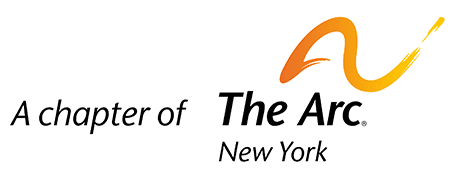
Diversity
Recognizing all dimensions of human differences. In the broadest sense, diversity refers to the inclusion of all historically marginalized people regardless of racial and ethnic background, disability, gender and gender identity, sexuality, nationality, religious beliefs, age, and socioeconomic status among others.
Equality
Guaranteeing identical distribution of resources regardless of the above-mentioned differences. Equality focuses on perceived fairness and is different from equity.
Equity
Recognizes that all people do not start from the same place. Focuses on adjusting imbalances, giving each person what they need to succeed. Imbalances focus on access, opportunity, and support.
Inclusion
The practice of creating spaces, in and outside an organization, that celebrate and recognize the value of diversity. Of great importance is including people who have historically been excluded at all levels of the organization (representation) and ensuring that everyone can achieve their full potential regardless of difference.
Bias
The term bias refers to unfair prejudice either in favor of or against a person or group in comparison with another person or group. Biases, whether conscious or unconscious, may be held by individuals, groups, organizations, or academic institutions. This can result in negative or positive consequences. Bias has negatively affected historically minoritized communities based on race, gender & sexuality, disability, immigration status, citizenship, and language among other differences.
BIPOC
An acronym for Black, Indigenous, and People Of Color
Cisgender
Adj: A term used to describe people whose gender identity matches the sex they were assigned at birth. Often abbreviated to cis.
Intent and Impact
Our intentions (what we want or hope to do) don’t always align with what we say or do which can impact how others perceive what one says and does. INTENT Refers to what you hope or want to do when choosing to perform an action. IMPACT Refers to the reality (e.g., results) of your actions/ behaviors. The resulting impact may not always align with what you intended. Owning the impact: When one’s impact is being called into question, especially if the action is perpetuating oppression, it is important to recognize the action is being called into question not the person’s character.
Reverse Racism
A term created and used by those with power (white people within the Western context) to deny their white privilege. Those in denial use the term reverse racism to refer to hostile behavior by people of color toward white people, and to affirmative action policies which allegedly give ‘preferential treatment’ to people of color over white people. There is no such thing as “reverse racism.”
Reverse Sexism
Term created to deny sexism. Fails to acknowledge that the word sexism exists because we live in a patriarchal society where men are dominant, and women are subordinate (and where men are privileged simply because they are men). There is no such thing as “reverse sexism.”
LGBTQIA+
Broadly speaking, it is an acronym that includes lesbian, gay, bisexual, transgender, queer/questioning, intersex, and allied/asexual/aromantic/agender people.
The term bias refers to unfair prejudice either in favor of or against a person or group in comparison with another person or group. Biases, whether conscious or unconscious, may be held by individuals, groups, organizations, or academic institutions. This can result in negative or positive consequences. Bias has negatively affected historically minoritized communities based on race, gender & sexuality, disability, immigration status, citizenship, and language among other differences.
An acronym for Black, Indigenous, and People Of Color
Adj: A term used to describe people whose gender identity matches the sex they were assigned at birth. Often abbreviated to cis.
Our intentions (what we want or hope to do) don’t always align with what we say or do which can impact how others perceive what one says and does. INTENT Refers to what you hope or want to do when choosing to perform an action. IMPACT Refers to the reality (e.g., results) of your actions/ behaviors. The resulting impact may not always align with what you intended. Owning the impact: When one’s impact is being called into question, especially if the action is perpetuating oppression, it is important to recognize the action is being called into question not the person’s character.
A term created and used by those with power (white people within the Western context) to deny their white privilege. Those in denial use the term reverse racism to refer to hostile behavior by people of color toward white people, and to affirmative action policies which allegedly give ‘preferential treatment’ to people of color over white people. There is no such thing as “reverse racism.”
Term created to deny sexism. Fails to acknowledge that the word sexism exists because we live in a patriarchal society where men are dominant, and women are subordinate (and where men are privileged simply because they are men). There is no such thing as “reverse sexism.”
Broadly speaking, it is an acronym that includes lesbian, gay, bisexual, transgender, queer/questioning, intersex, and allied/asexual/aromantic/agender people.

